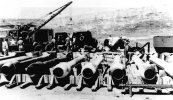marathag
Banned
OAK RIDGE (Total) $1,188,352,000 63%
—K-25 Gaseous Diffusion Plant $512,166,000 27%
—Y-12 Electromagnetic Plant $477,631,000 25%
—Clinton Engineer Works, HQ and central utilities $155,951,000 8%
—Clinton Laboratories $26,932,000 1%
—S-50 Thermal Diffusion Plant $15,672,000 1%
HANFORD ENGINEER WORKS $390,124,000 21%
SPECIAL OPERATING MATERIALS $103,369,000 5%
LOS ALAMOS PROJECT $74,055,000 4%
RESEARCH AND DEVELOPMENT $69,681,000 4%
GOVERNMENT OVERHEAD $37,255,000 2%
HEAVY WATER PLANTS $26,768,000 1%
You can see, that R&D was one of the cheaper aspects of the Program, Big Money went to the engineering side
—K-25 Gaseous Diffusion Plant $512,166,000 27%
—Y-12 Electromagnetic Plant $477,631,000 25%
—Clinton Engineer Works, HQ and central utilities $155,951,000 8%
—Clinton Laboratories $26,932,000 1%
—S-50 Thermal Diffusion Plant $15,672,000 1%
HANFORD ENGINEER WORKS $390,124,000 21%
SPECIAL OPERATING MATERIALS $103,369,000 5%
LOS ALAMOS PROJECT $74,055,000 4%
RESEARCH AND DEVELOPMENT $69,681,000 4%
GOVERNMENT OVERHEAD $37,255,000 2%
HEAVY WATER PLANTS $26,768,000 1%
You can see, that R&D was one of the cheaper aspects of the Program, Big Money went to the engineering side
Too low a ceiling, and just too slow. You have 44 seconds from 34,000 feet to be clear of the detonation area. B-29 Silverplates got 9 mile slant range away from Ground Zero, and that caused sever buffetingLancaster would be a viable delivery platform

